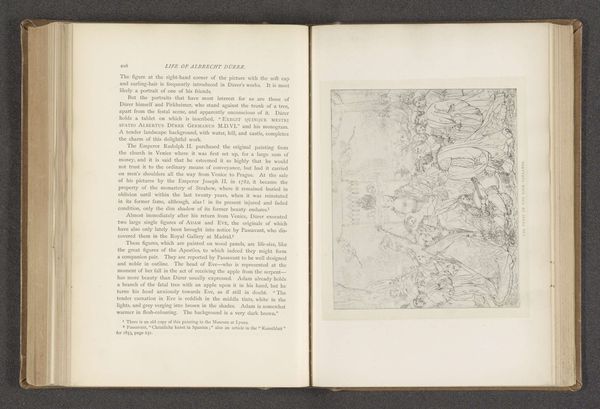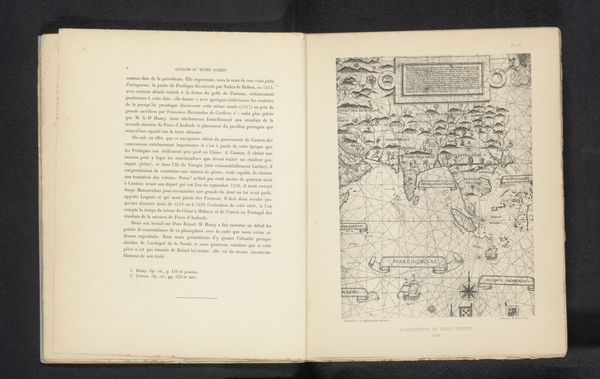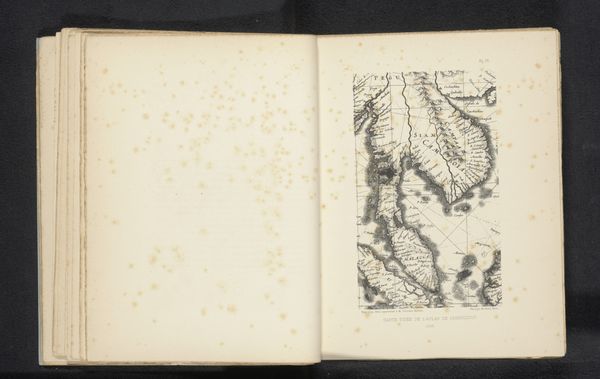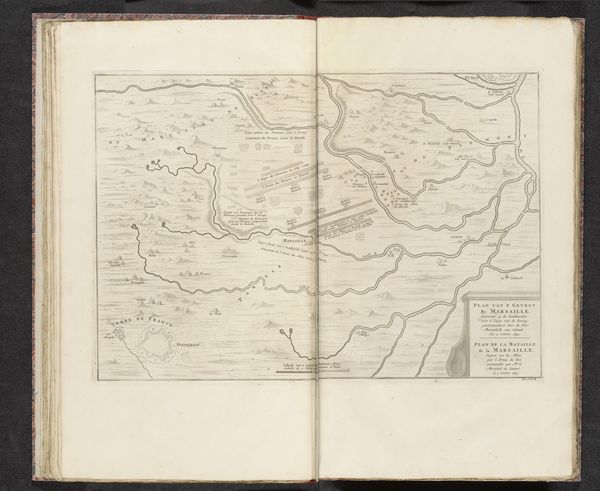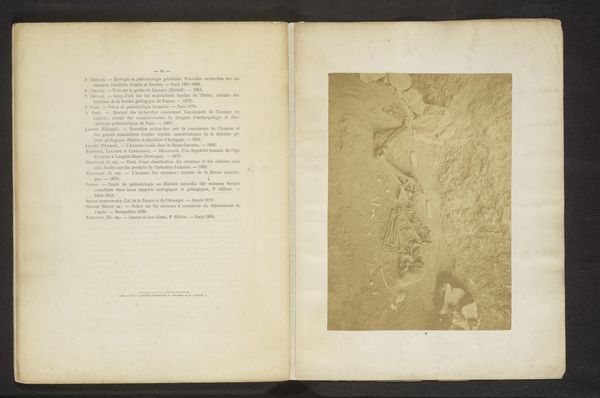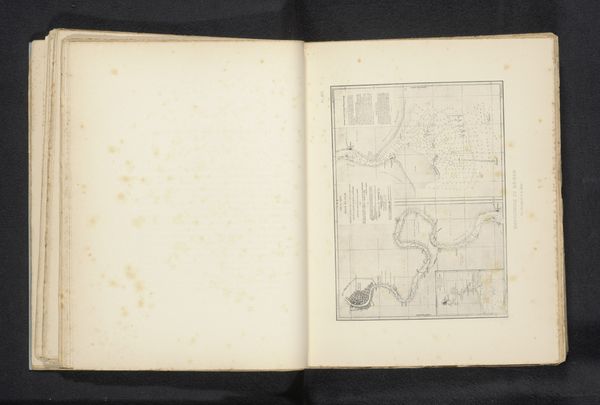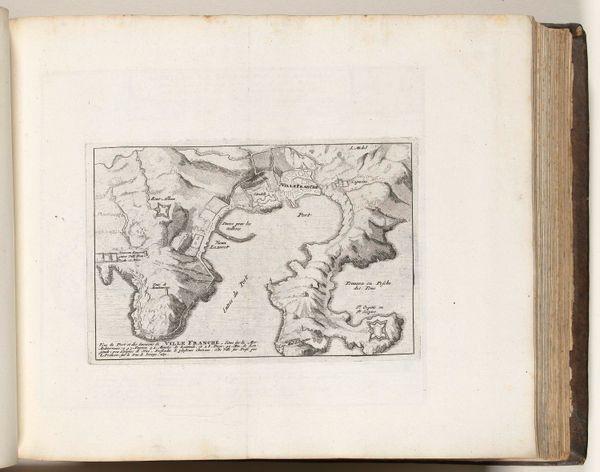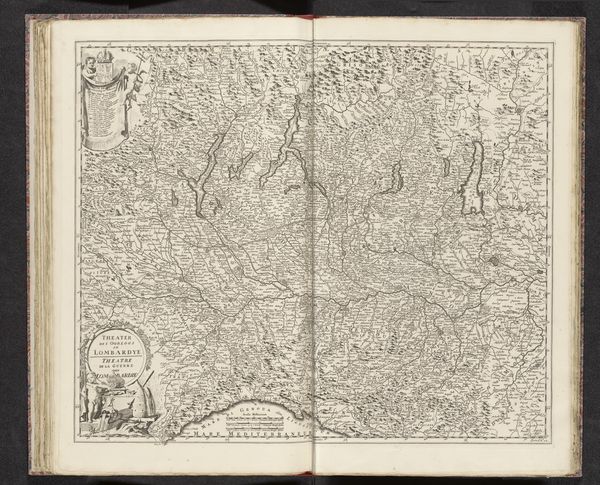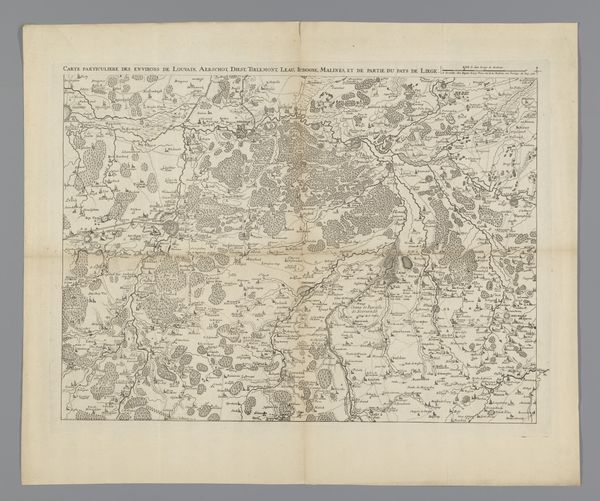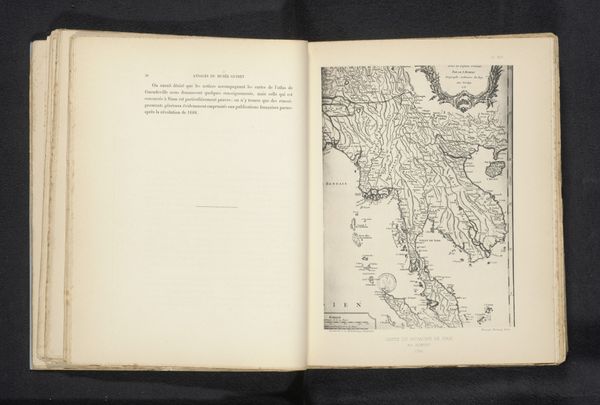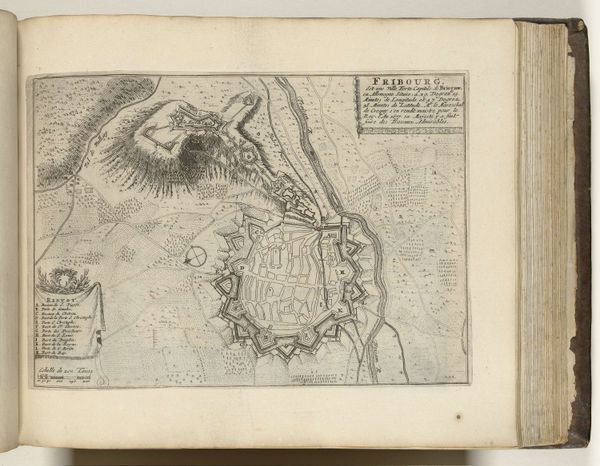
Reproductie van een landkaart van Zuidoost-Azië door de gebroeders van Langren before 1895
0:00
0:00
print, paper, engraving
# print
#
paper
#
geometric
#
engraving
Dimensions: height 216 mm, width 158 mm
Copyright: Rijks Museum: Open Domain
Curator: So, here we have a reproduction of a map of Southeast Asia, crafted before 1895 by the Van Langren brothers. It is realized with paper, print, and engraving. What stands out to you initially? Editor: It’s quite detailed for such an early map, but I can’t help but think about what went into producing this. It's a very utilitarian piece, isn't it? How would a materialist interpret such a map? Curator: Indeed. Let's consider the labor involved: the engravers meticulously etching details, the paper makers, the printing process itself. What resources were extracted and transformed to create this object? Editor: Well, forests for the paper, obviously. The inks...were they plant-based, mineral-based? And the sheer amount of time invested by skilled laborers. It gives a tangible weight to the concept of colonial mapping, not just as an intellectual exercise, but a physical one. Curator: Precisely! And who were the intended consumers? This wasn't mass-produced, it would have been commissioned and consulted by traders, colonial administrators, and those seeking to control trade routes. Think of it less as art, and more as a tool, meticulously crafted. Can we divorce it from its function? Editor: So, the map itself, regardless of aesthetic quality, becomes a record of material consumption, colonial ambition and labour, with all those intertwined. Did they consider that, I wonder? Curator: That is exactly the critical examination this perspective hopes to provoke! This simple map suddenly becomes quite dense, don't you agree? Editor: I do. Thanks. It is more interesting seeing a convergence between colonial intent and all of this labour it represents. Curator: And by understanding the materials and processes, we understand the power structures embedded within the image itself.
Comments
No comments
Be the first to comment and join the conversation on the ultimate creative platform.


